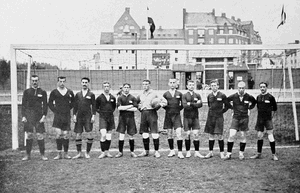
There are two different Russian national teams that we can speak of. There is the history of the USSR that took place before the breakup of the Soviet Union, and there is the modern day Russia that has been in existence since the breakup of the union at the start of the 1990s.
Whether you consider Russian football to have a successful history depends entirely on how far back you think it should go.
Football was the most popular sport in the Soviet Union and that has continued to be the case in modern day Russia, though the organisation of the game is now significantly different to how it was before 1991.
Back then the national side and all of the clubs in Russia tended to be linked to large organisations or state institutions. Since the breakup of the union, however, they have all become private enterprises with the associated money being bandied about that comes in just such a situation.
Introduction to Russian Football
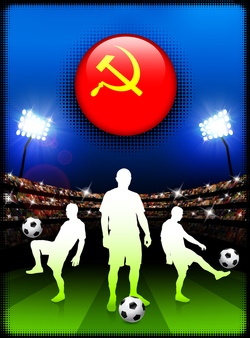 The country has struggled on the international stage since becoming Russia. As the Soviet Union it was a footballing powerhouse of a nation, winning the 1960 European Championship, finishing in fourth place in the 1966 World Cup, and winning two Gold medals in the Summer Olympic football tournament in 1956 and 1988. Russia, meanwhile, had failed to qualify from the World Cup group stage until they hosted the competition in 2018 and reached the quarter finals. They suffered the same fate in the Euros except for the 2008 tournament when they made the semi-finals and finished third overall.
The country has struggled on the international stage since becoming Russia. As the Soviet Union it was a footballing powerhouse of a nation, winning the 1960 European Championship, finishing in fourth place in the 1966 World Cup, and winning two Gold medals in the Summer Olympic football tournament in 1956 and 1988. Russia, meanwhile, had failed to qualify from the World Cup group stage until they hosted the competition in 2018 and reached the quarter finals. They suffered the same fate in the Euros except for the 2008 tournament when they made the semi-finals and finished third overall.
On an international scale Russian football clubs have long been a dominant force. Nowadays, teams such as Zenit St. Petersburg and the Moscow clubs of Spartak, Lokomotiv, CSKA and Dynamo ply their trade in the Russian Premier League, but they have also competed in Europe many times in the past. In 2005 CSKA Moscow won the UEFA Cup, the competition that is now known as the Europa League, and in 2007 Zenit St. Petersburg achieved the same thing, also winning the UEFA Super Cup in the same season.
Russian football is a unique thing insomuch as it is simultaneously quite young but also has a long and successful history behind it. Here we’ll tell you all about the sort of stadiums you’re likely to encounter should you go to that part of the world to watch a bit of football. We’ll also let you know about the Russian football league system and we’ll tell you about the history of the nation itself.
Russian Stadiums
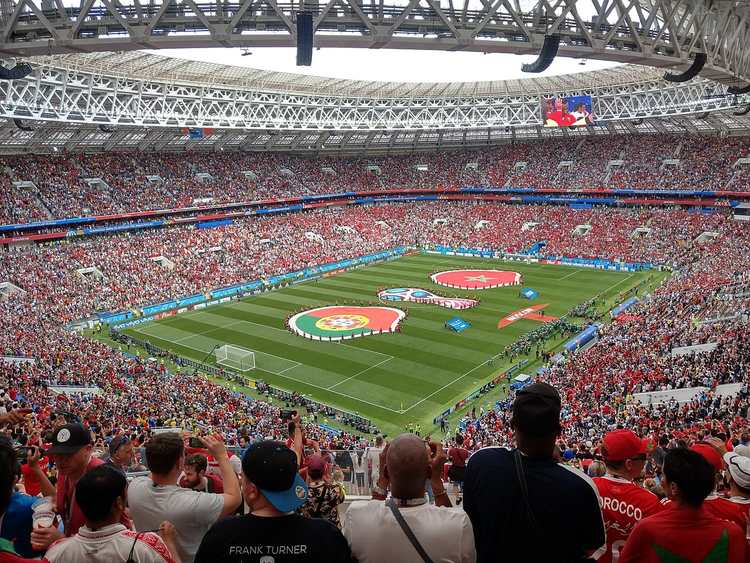
As the most popular sport in the country it’s little wonder that Russia has some wonderful stadiums to boast about. The country’s national ground, the Luzhniki Stadium, has a capacity of just shy of 80,000, for example. There are more than fifty stadia with capacities in excess of 10,000, with an average being at about the 20,000 mark. Interestingly there were also a number of top-class stadiums built ahead of the country hosting the 2018 FIFA World Cup. They are amongst the very best and most modern stadiums in the world.
Of course just because stadiums are big and new doesn’t necessarily mean that they are a delight to spend time in. The weather in Russia is notoriously bad, presuming as we are that you’re also not massive fans of the cold. The pitches in the country tend to either be artificial or else not very good. The former because it’s the only way to cope with the adverse weather conditions in the coldest part of the region and the latter because if they’re not artificial then they’re going to be bruised and battered by the cold, the wind, and the rain.
Russian Leagues
 The Russian football league has improved immeasurably at the top-end of the system as it has benefited from the recovery of the old system of play and the influx of cash from private owners, businesses, and enterprises to help return the teams to the top level in Europe.
The Russian football league has improved immeasurably at the top-end of the system as it has benefited from the recovery of the old system of play and the influx of cash from private owners, businesses, and enterprises to help return the teams to the top level in Europe.
There are sixteen teams in the Russian Premier League, with a further eighteen in the second-tier. This is known as the National Football League and is a self-governed league. The Second Division is the lowest level of professional football in the country and is administered by the Russian Football Union.
The Amateur Football League comes after the Second Division. This is split up into ten different zones based on their geographical location, within which are different regions; the Northwest, Golden Ring, Moscow and Podmoskovye all fit into the Moscow region, for example. The entire football system in Russia is structured into two different but interconnected football leagues, with promotion and relegation between them all.
Russia National Team
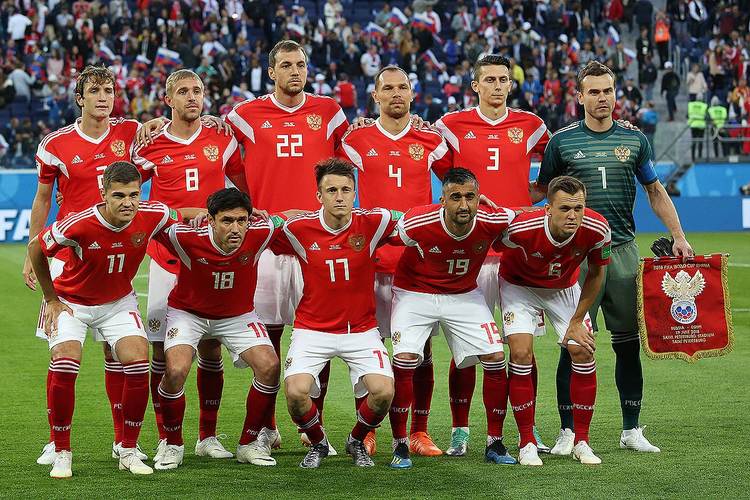
Let’s start with the basics: The Russia national football team represents the nation of Russia in association football. It is controlled by the Russian Football Union, which is the governing body for football in Russia. The team tends to play its football matches in four different stadiums, depending on the occasion. The Otkrytiye Arena is the home of Spartak Moscow and is used for some of the smaller matches, with Lokomotiv Stadium also being based in Moscow and used for friendly games. Petrovsky Stadium is in St. Petersburg and also hosts less well-attended games, whilst Luzhniki Stadium once again became the biggest and best ground in the country when it re-opened in 2017.
Russia played its first international match as a separated entity from the Soviet Union against Moscow in 1992. They won 2-0 and a host of former USSR players were in the team. The ‘new’ country’s most successful international tournament was the European Championships in 2008. Guus Hiddink was the manager and they were drawn into a group containing Sweden, Spain and Greece. They finished second, making it through to the quarter-finals against the Netherlands. They qualified for the semi-finals with a 3-1 win after extra time and lost 3-0 to eventual winners Spain. That is the only time that Russia have made it out of the group stage of an international tournament apart from reacing the quarter finals of the World Cup which they hosted in 2018.
Key Stats
| USSR/Russia National Team Statistics | |
|---|---|
| Year Formed | 1923/1992 |
| Home Stadium | Luzhniki Stadium |
| Stadium Capacity | 81,000 |
| Major Honours | European Championship (1960) |
| Current Manager | Stanislav Cherchesov |
| Top Scorer | Aleksandr Kerzhakov (30) |
| Most Caps | Sergei Ignashevich (127) |
| Best Performance at World Cup | Quarter Finals (2018) |
| Best Performance at European Championships | Winners (1960) |
| Kit Colours | Maroon (Home), White and Blue (Away) |
History Of Football In Russia
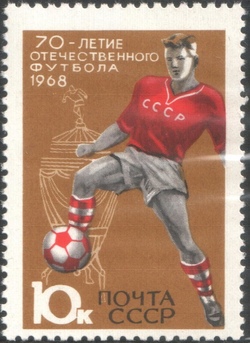 As is the case with every major European country, football was introduced to Russia by the British. Scottish and English men working in St. Petersburg formed football teams at the end of the nineteenth century.
As is the case with every major European country, football was introduced to Russia by the British. Scottish and English men working in St. Petersburg formed football teams at the end of the nineteenth century.
Slowly but surely the sport spread throughout the rest of the country, gaining in popularity with local people who were intrigued by the game.
In 1901 the St. Petersburg Football League was formed, becoming the first football league in the country.
When the All-Russian Football Association was founded the SPFL were one of the founding members. In 1912 that newly formed FA joined FIFA and the first national championships of the Russian Empire was held in the same year.
During the 1950s and 1960s an extraordinarily gifted crop of players emerged in Russia. This is seen today as the Golden Age of football in the Soviet Union.
